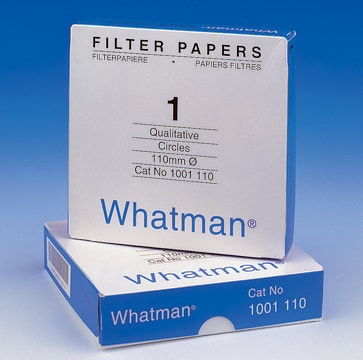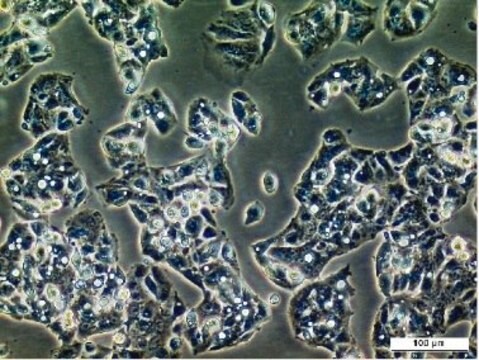CACO-2 Cell Line human
86010202, human colon (Caucasian colon adenocarcinoma), Epithelial
Synonyme(s) :
Caco 2 Cells, Caco-II Cells, Caco2 Cells
About This Item
Produits recommandés
product name
CACO-2 Cell Line human, from human colon(Caucasian colon adenocarcinoma), 86010202
Source biologique
human colon (Caucasian colon adenocarcinoma)
Mode de croissance
Adherent
Caryotype
Hypertetraploid, modal no. 96
Morphologie
Epithelial
Produits
Not specified
Récepteurs
Not specified
Technique(s)
cell culture | mammalian: suitable
Maladie(s) pertinente(s)
cancer
Conditions d'expédition
dry ice
Température de stockage
−196°C
Description générale
Origine de la lignée cellulaire
Description de la lignée cellulaire
Application
- to study if components of the sigma B regulon in Listeria monocytogenes contribute to cell invasion
- for functional analysis of bacteriocin divercin AS7
- to study the intracellular invasion by Listeria ivanovii
- to study the effect of Maslinic acid, a pentacyclic triterpene, on colon cancer cell lines
- in in vitro digestive enzymes toxicity studies
- for Hazara virus infection and cultivation
- to test the anti-cancer activity of the Curcuma longa and Origanum marjorana
- in biocompatibility studies with the bark extracts of Salix spp.
- to test the effect of N-3-oxo-dodecanoyl-homoserine (3O-C12-HSL) lactone from P.aeruginosa on the mitochondrial functionality
- to test the effect of elastin-like recombinamer (ELR) based nanoparticle
- as an in vitro epithelial cell model for studying the toxicity of zinc oxide nanoparticle
- in the intestinal permeability assays with green rooibos extract
- in toxicity studies with mycotoxin Deoxynivalenol (DON) cadmium (Cd)
Profil d'ADN
CSF1PO: 11
D13S317: 11,13,14
D16S539: 12,13
D5S818: 12,13
D7S820: 11,12
THO1: 6
TPOX: 9,11
vWA: 16,18
Milieu de culture
Procédure de repiquage
Autres remarques
Produit(s) apparenté(s)
Certificats d'analyse (COA)
Recherchez un Certificats d'analyse (COA) en saisissant le numéro de lot du produit. Les numéros de lot figurent sur l'étiquette du produit après les mots "Lot" ou "Batch".
Déjà en possession de ce produit ?
Retrouvez la documentation relative aux produits que vous avez récemment achetés dans la Bibliothèque de documents.
Articles
DNA, RNA, cDNA derived from ECACC mammalian cell lines allow screening for genes or expression patterns to identify lines most suitable for specific research.
Notre équipe de scientifiques dispose d'une expérience dans tous les secteurs de la recherche, notamment en sciences de la vie, science des matériaux, synthèse chimique, chromatographie, analyse et dans de nombreux autres domaines..
Contacter notre Service technique




